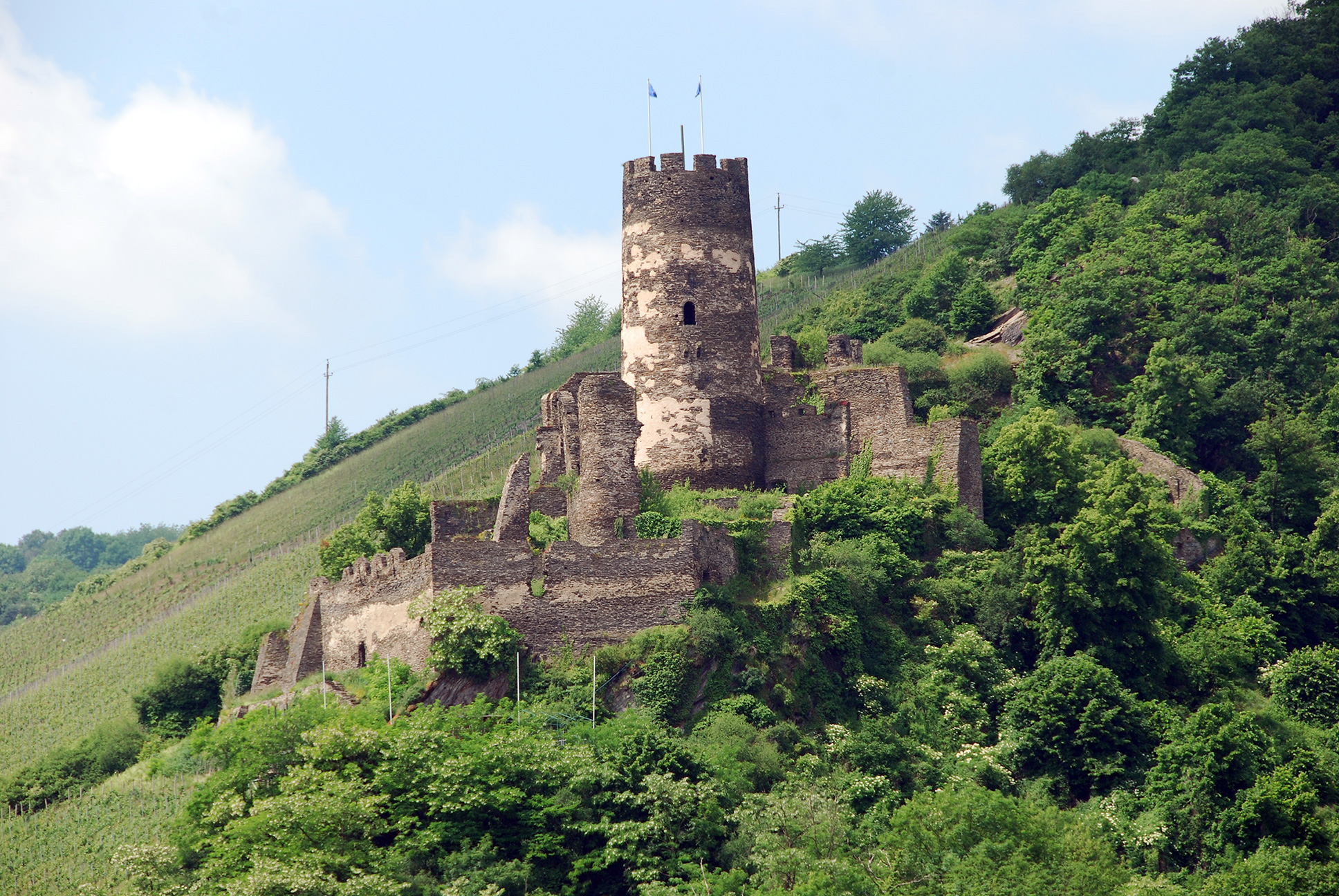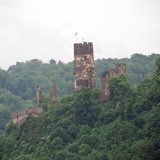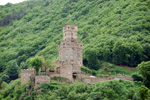History
Burg Fürstenberg resides along the River Rhine near Rheindiebach in a picturesque setting overlooking vineyards and the river below. It's one of the numerous castles in the 50-mile stretch along the Rhine between Mainz and Koblenz, Germany.

The Archbishop of Cologne, Engelbert I, built the castle in 1219 to protect his property around Bacharach. Nearly 25 years later, in 1243, the castle came into possession of Wittelsbach Count Palatines as a fief of the archdiocese of Cologne. Besides protecting surrounding lands, it was used to levy tolls on boats traveling along the Rhine.
Around 1500, a three-quarter tower was added to the bend side of the curtain wall, allowing the wall to be flanked by firearms.
It proved turbulent for Burg Fürstenberg in the 17th century. During the Thiry Years' War, the Spaniards attacked the castle under Ambrosio Spinola's leadership in 1620. The castle was attacked again in 1632 by Swedish troops under King Gustavus Adolphus. However, the French ultimately destroyed it during the Palatine War of Succession in 1689. Burg Fürstenberg has steadily deteriorated to its current ruinous state for over three centuries.
Castle Highlights
Burg Fürstenberg is privately owned and not open to the public. However, it's worth taking pictures of the castle from the shoulder of the road leading to Rheindiebach or aboard one of the River Rhine cruise boats passing nearby.
The 13th century circular keep represents the most predominant feature of the castle. As the keep still retains remnants of original plaster, tourists can easily envision its former grandiose appearance during medieval times. Moreover, various surrounding curtain walls also remain intact.
The mountainside of the castle was protected by an artificial twelve-meter wide and 15-meter deep ditch that was crossable via a drawbridge.





